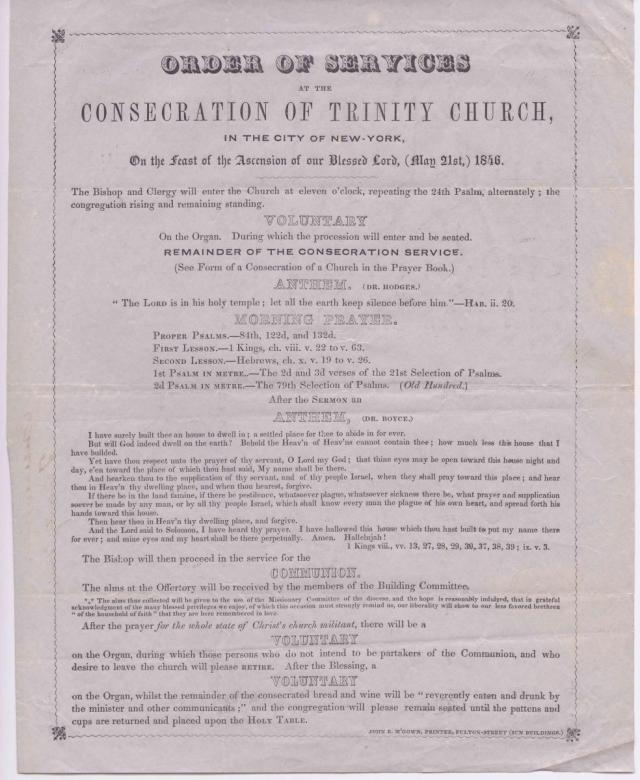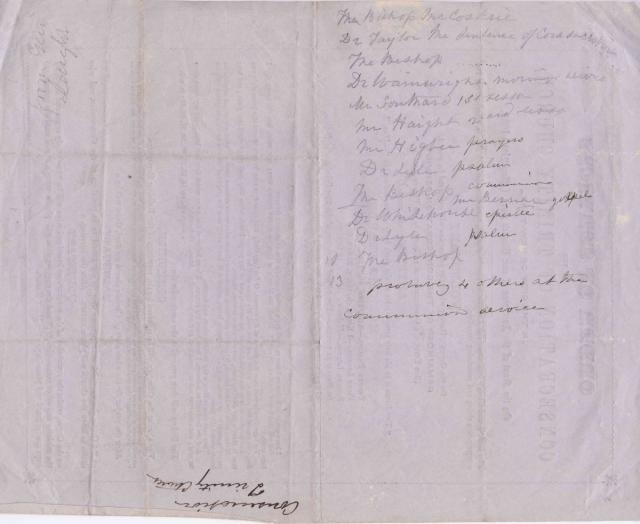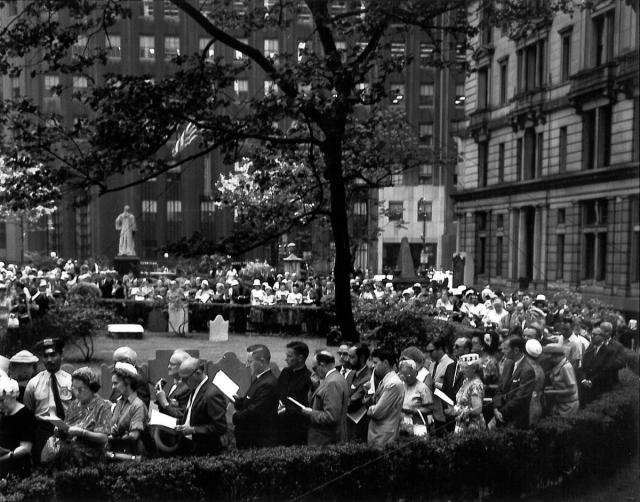Commemorating Ascension Day
On Thursday, May 10, 2018, Trinity Parish will celebrate the Feast of the Ascension with a Holy Eucharist in St. Paul’s Chapel at 5:30pm.
The Feast of the Ascension, also known as Ascension Day, occurs forty days after Easter, and commemorates the bodily ascension of Jesus into heaven. In Trinity Parish it’s also celebrated as the day the present Trinity Church building, third on the same site, was consecrated on May 21, 1846.
The consecration of Trinity Church was long-awaited. The edifice had been under construction since 1839, and the new church was the city’s tallest building. The Bishop of Western New York, Dr. William Heathcote De Lancey, a descendant of one of the parish’s original vestrymen, Caleb Heathcote, was invited, as were all clergymen in the Diocese of New York.
There was, of course, some liturgical controversy. Invited clergy were to meet at 39 Broadway in the house of William Bunker, where they would don surplices and scarves for the procession to the church. But surplices, as one unhappy clergyman noted, are “ever associated with the offering of prayer and the administration of the sacrament in houses set apart for the worship of God.” To wear “this vestment in public processions in the streets we look upon as an innovation on established customs and also not justified by good taste.” Because of the surplice dispute, nine clergymen, including those from St. Mark’s in the Bouwerie (as it was then spelled) and St. Anne’s, Brooklyn, declined to participate in the service.
At 10am the procession set out for Trinity Church, led by the sextons and their assistants. Next came Dr. Charles Morris, the headmaster of Trinity School, “holding the hands of the school’s two youngest pupils,” a moment of deep symbolism for a parish that had invested so much in building for the future. The procession was also, in the estimation of a visiting clergyman from Massachusetts, the largest assembly of vested Episcopal clergy on the continent up to that date.
The order of service from the consecration of Trinity Church. The handwritten notes on the back indicate which clergyman is responsible for each part of the service and are the work of General Edward W. Laight, one of the Wardens.
The service itself was described as “simple and impressive.” Dr. Edward Hodges, the church’s organist and son of the previous organist, composed the Consecration Service in E for the occasion.
The following year, the Rev. Dr. William Berrian, Rector, and the Vestry began the custom of celebrating the anniversary of the consecration of Trinity Church on Ascension Day. The day also took on the character of the “Mothering Day of Trinity Parish, when all the clergy and parishioners of the several chapels come together with others to assist in the offering of the Holy Sacrifice,” as one parish newsletter reported. Clergy and parishioners would process into the church, carrying banners emblazoned with the names of their chapels.
This practice ended in 1976 when three of the four remaining chapels in the parish—St. Luke-in-the-Fields, St. Augustine’s, and Chapel of the Intercession—voted to become independent parishes. This was done as part of a plan for greater self-determinism by members of the parish in program and mission. St. Paul’s Chapel, just five blocks north of Trinity Church, was administratively absorbed into the mother church in 1975.
The congregation gathered in Trinity Church at the start of the 1971 Ascension Day service.








